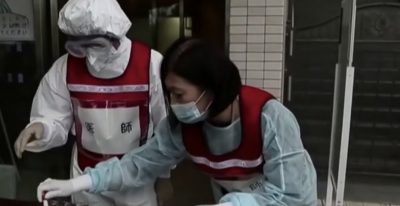Covid-19 health care strains in Hokkaido, Nagoya, Osaka, and Tokyo
Kanako Mita and Lee Jay Walker
Modern Tokyo Times

The coronavirus (Covid-19) crisis in Japan is gradually increasing more strains in several parts of the country. Hence, the health care system in parts of Hokkaido, Nagoya, Osaka, and Tokyo are coming under the highest strains since coronavirus entered Japan early this year.
Indeed, in the last 24 hours, a new record of 47 coronavirus deaths emerged and it appears that this upward trend will continue. Similarly, the number of seriously ill patients reached a new high of 530 people. However, despite this, the main emphasis for the Japanese government is to keep the economy ticking and to protect jobs.
In the ward of Ota in Tokyo, just below 550 coronavirus cases were recorded last month. This is putting more pressure on the local public health service. At the same time, tracing is becoming harder because of business-related factors. For example, at work, dining out, and other areas.
Meanwhile, in the north of the country, two hospitals in the city of Asahikawa in Hokkaido are under enormous strain. Thus nurses from the Self-Defense Forces have gone to assist the Yoshida Hospital and concerns are growing for the Asahikawa Kosei General Hospital that is blighted by 237 recent cases. Indeed, in this hospital, this is the largest coronavirus cluster to hit any hospital throughout Japan.
In the city of Nagoya despite the capacity currently being 300 fully monitored beds, only 180 are available because of nursing staff-related issues. Thus with 182 coronavirus patients needing support some 27 patients are being helped in different parts of this prefecture. The remaining 155 are being supported in Nagoya. However, if the situation deteriorates too much then outside help will be required.
Other parts of Japan are also coming under increasing pressure. Thus the national government needs to support local governments. For example, in Osaka, just below 69 percent of all hospital beds designated for severe coronavirus cases are occupied. At the same time, nurses from other prefectures are helping Osaka in the Kansai region.
Overall, it is abundantly clear that Japan is in a worse situation now in December rather than when coronavirus first entered Japan in January. Hence, the central government and local governments hit the hardest have had ample time to prepare for increasing infections. However, it seems that distractions – and confusion caused by the travel and eating campaigns – have created a double-edged sword that is now being felt in several parts of the country.
https://stopcovid19.metro.tokyo.lg.jp/en/ – Tokyo Metropolitan Government website for updates about the coronavirus crisis in Tokyo.
https://toyokeizai.net/sp/visual/tko/covid19/en.html – Japan and Tokyo Covid-19 news with more analysis
https://covid19japan.com/ – Japan regional coronavirus statistics
https://www.worldometers.info/coronavirus/ World coronavirus statistics

PLEASE SUPPORT MODERN TOKYO TIMES by DONATING
Modern Tokyo News is part of the Modern Tokyo Times group
DONATIONS to SUPPORT MODERN TOKYO TIMES – please pay PayPal and DONATE to sawakoart@gmail.com
http://moderntokyotimes.com Modern Tokyo Times – International News and Japan News
http://sawakoart.com – Sawako Utsumi personal website and Modern Tokyo Times artist
https://moderntokyonews.com Modern Tokyo News – Tokyo News and International News
PLEASE JOIN ON TWITTER
https://twitter.com/MTT_News Modern Tokyo Times